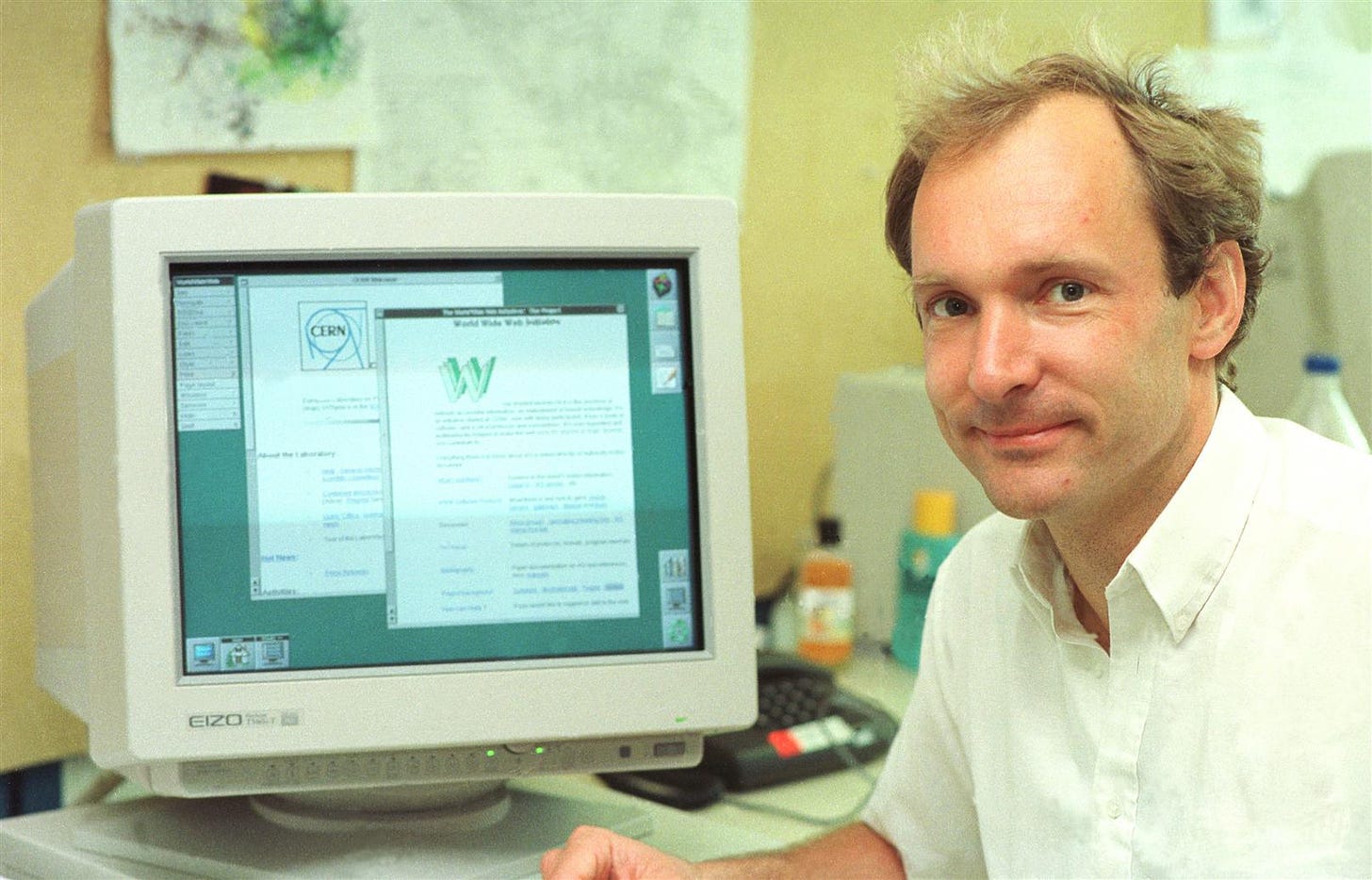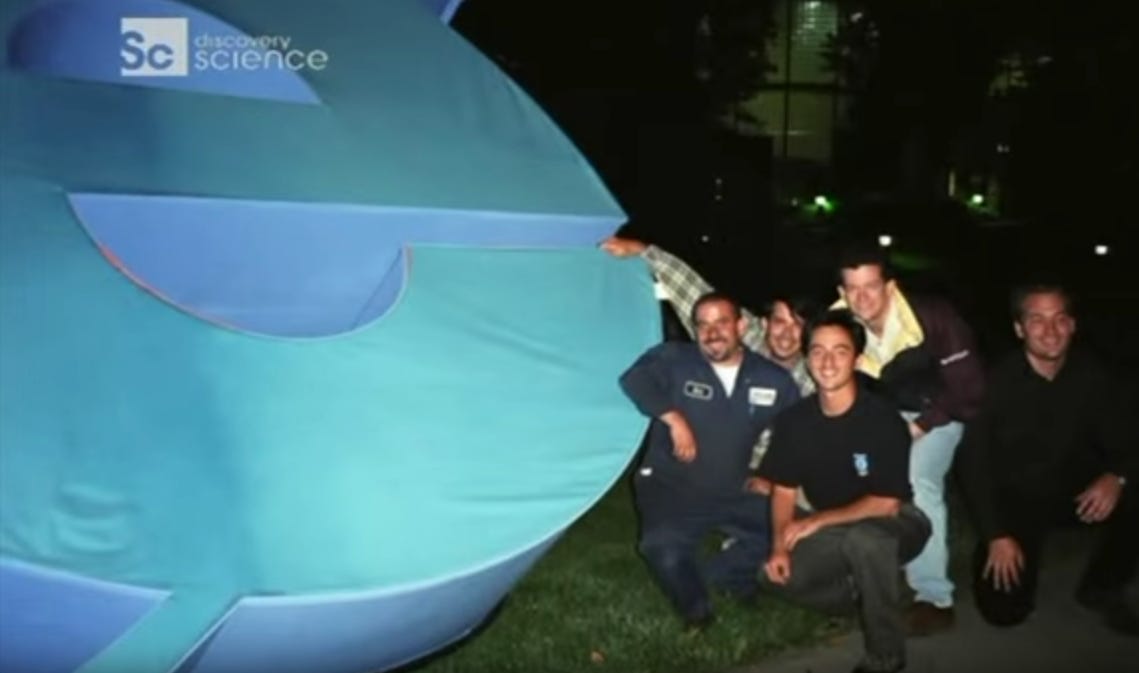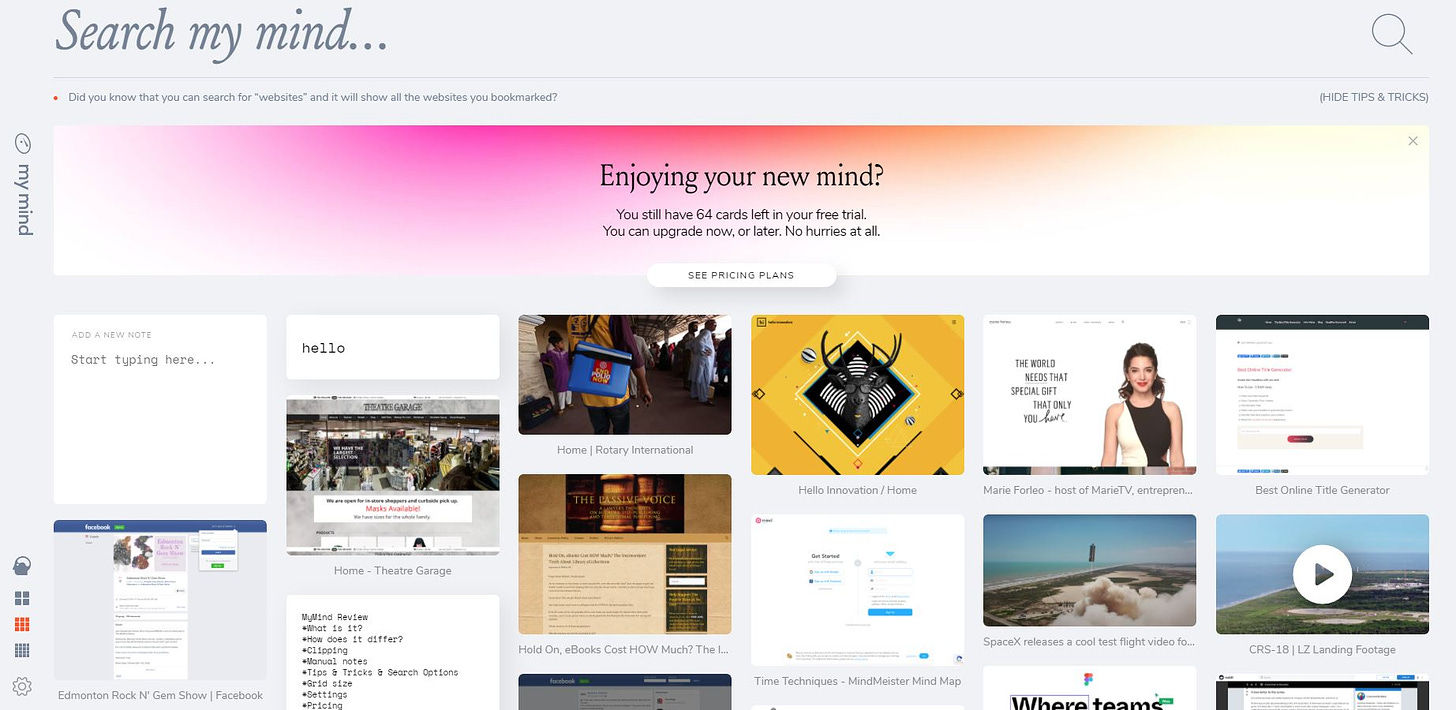The web browser: our window to the world
From the WorldWideWeb and Netscape to a world colored in Chrome, the browser has evolved as a tool for academics to everyone's portal to the global online world.
Welcome to Day to Data!
Did a friend send you this newsletter? Be sure to subscribe to get a dose of musings by a data scientist turned venture investor, breaking down technical topics and themes in data science, artificial intelligence, and more. New post every other Sunday.
Welcome to 2024! Hope you got to ring in the new year in style and take some time to rest. For the first post of the year, I’m launching a new format I’m really excited about, in hopes of providing value on the past, present, and future of technical topics in an easy-to-digest format. We’ll talk about the history, where we are today, and look to the future for a given topic. We’re starting 2024 with one of the most fundamental pieces of consumer technology: the browser.
It’s our window to the Internet. It’s where we spend most of our time. It’s where we explore new ideas and center our digital life. It has to evolve as the internet and its users do. Let’s break down the story of the browser, starting at the beginning.
Where it started: the World Wide Web
To talk about the start of the browser, we have to touch on the start of the internet. UCLA (Go Bruins!) sent a message to the Stanford Research Institute in 1969, marking the beginning of ARPANET and becoming the first node of what would become the Internet. Universities and governments were forming the early Internet, but it was entirely inaccessible by the public. Then came the WorldWideWeb. Tim Berners-Lee built a graphical interface for the Internet for the NeXT computer (the product Steve Job’s built during his leave from Apple) that gave keys to the Internet to a whole new cohort of users.
If you want to surf a recreation of the OG WorldWideWeb, use the re-creation here!

In 1993, the first popular web browser Mosaic was built by a computer scientist at University of Illinois Urbana-Champaign named Marc Andreessen, who is now perhaps the most famous venture capital investor in the world leading a16z. Andreessen went on to found Netscape, a commercial web browser built for Windows and Mac, and enable dynamic Web pages, RSS feeds, and other online innovations. This was the beginning of the people’s Web.
To see 14 years of Netscape browsers, take a look at the history here!

Web pages were once static places. But now that everyday users were gaining access, not just researchers and academics, people wanted more from the internet - color, interaction, and a dynamic nature. This was a catalyst for the launch of JavaScript by Netscape, Cascading Style Sheets (CSS) by Microsoft, Ruby on Rails, and PHP — all tools that enabled a more dynamic, engaging web through interactive sites and revolutionary design.
With the development of these engaging new tools and the integration with their operating system, just 5 years after the founding of Netscape, Microsoft had 99% of browser market share with its product Internet Explorer. There was a brief moment of “the browser wars” with some comedic battles between Microsoft’s Internet Explorer team and Netscape, which included the IE team sending a massive “e” to the Netscape headquarters and putting it front and center on their lawn.

Netscape went on to open-source its project and launch Moxilla Firefox in 2002 after seeing Microsoft endure a legal battle over a monopoly on the browser market. Firefox began to chip away at Internet Explorer’s domain, rising to its peak of ~30% market share in 2010.
Where we’re at: It is Chrome’s world
In 2008, Google launched an open source browser product called Chrome. The browser, open-sourced through Chromium, was launched to be streamlined and simple. This launch, though almost 16 years ago, is the most recent massive disruption to the evolution of the browser.

In May 2012, Chrome dethroned Internet Explorer as the most widely used web browser. A new era was upon us - it was a world in Chrome. Their market share has grown impressively since launch, eating away at Internet Explorer and Firefox primarily, with over 60% of web browser share today.
Today, the browser and the idea of search are fully intertwined - one cannot be imagined without the other. To open Chrome is to search the internet. It’s a portal. As search evolves, browsers will evolve too.
Where we’re going: the searchable, scalable mind
The future of the internet as a whole is evolving. And the browser, which hasn’t seen a massive shift since the launch of Chrome, has to keep up. The browser is an exciting battleground in my opinion - you’re the portal to the Internet and everyone’s first eyes in the start to their web journey. You have to manage rapidly advancing web applications, always prioritizing speed, latency, and memory management. The browser now also represents your online personality, being a profile that represents your searches, where you spend your time, and the ideas you save. And with the meteoric rise of generative AI, will all browsers just be a chatbot interface, for which your bookmarks, search history, and computer contents can effortlessly be engaged with? There’s lots more to come.
Companies to watch
The Browser Company is leading the charge as a well-funded startup changing the way we interact with the internet. Their product Arc has rave reviews of being intuitive, beautifully designed, and effortless at organizing your online life. Led by Josh Miller, the company has amassed over 100K followers on Twitter, raised $75M+ from Slack Fund, BoxGroup, and notable angels like Figma founder Dylan Field and LinkedIn founder Reid Hoffman.
Bookmarks have long merited their own platform, outside of just your web browser. With an emphasis on surfacing your creative inspiration alongside everyday life, mymind aims to bring your bookmarks, notes, inspiration and ideas into one central hub. The tool is made for “designers, writers, researchers, developers & visual minds” of all kind. It uses artificial intelligence to automatically categorize and organize your thoughts, surfacing what’s relevant across a multitude of dimensions.
To learn more
Thanks for tuning in! I’d love to hear any feedback or thoughts on this format, as well as any ideas for topics you’d like for me to cover in the future. And if you’ve been enjoying Day to Data, let a friend know! Have a great week.
You can find me on Twitter/X at @gabyllorenzi.







You need to find a way to link this to a college intro IT course, since few faculty go to the bother to explain history or development. For that matter, they’re not likely to look ahead.